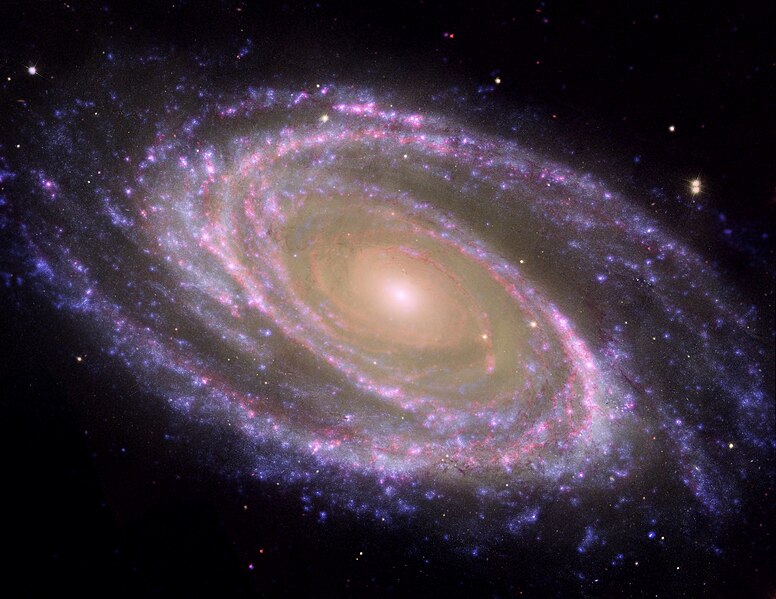Archivo:Sig07-009.jpg

Tamaño de esta previsualización: 776 × 599 píxeles. Otras resoluciones: 311 × 240 píxeles · 622 × 480 píxeles · 995 × 768 píxeles · 1280 × 989 píxeles · 2560 × 1977 píxeles · 3180 × 2456 píxeles.
Ver la imagen en su resolución original (3180 × 2456 píxeles; tamaño de archivo: 5,94 MB; tipo MIME: image/jpeg)
Historial del archivo
Haz clic sobre una fecha y hora para ver el archivo tal como apareció en ese momento.
| Fecha y hora | Miniatura | Dimensiones | Usuario | Comentario | |
|---|---|---|---|---|---|
| actual | 20:39 11 jul 2007 |  | 3180 × 2456 (5,94 MB) | Anzibanonzi | ==Summary== This beautiful galaxy is tilted at an oblique angle on to our line of sight, giving a "birds-eye view" of the spiral structure. The galaxy is similar to our Milky Way, but our favorable view provides a better picture of the typical architectur |
Usos del archivo
Las siguientes páginas usan este archivo:
Uso global del archivo
Las wikis siguientes utilizan este archivo:
- Uso en af.wiki.x.io
- Uso en ar.wiki.x.io
- Uso en ast.wiki.x.io
- Uso en be.wiki.x.io
- Uso en ca.wiki.x.io
- Uso en de.wiki.x.io
- Uso en el.wiki.x.io
- Uso en en.wiki.x.io
- Uso en en.wikibooks.org
- Uso en en.wikiversity.org
- User:Marshallsumter/Original research/Physics
- User:Marshallsumter/Keynote lectures (draft)/Astronomy
- User:Marshallsumter/Keynote lectures (draft)/Astrophysics
- User:Marshallsumter/Radiation astronomy1/Opticals
- Stars/Sciences
- User:Marshallsumter/Radiation astronomy/Empiricisms
- Mathematics/Astronomy/Quiz
- User:Marshallsumter/Radiation astronomy1/Opticals/Quiz
- Stars/Galaxies
- User:Marshallsumter/Radiation astronomy/Courses/Principles/Hourly 1
- User:Marshallsumter/Radiation astronomy/Courses/Principles/Hourly 2
- Furlongs per fortnight
- Problems/Astronomy
- User:Marshallsumter/Radiation astronomy/Courses/Principles/Midterm quiz
- User:Marshallsumter/Radiation astronomy/Courses/Principles/Final quiz
- Stars/Galaxies/Spirals
- User:Marshallsumter/Original research/Physics/Quiz
- User:Marshallsumter/Radiation astronomy1/Galaxies
- Repellor vehicles/Shielding/Quiz
- User:Marshallsumter/Radiation astronomy2/Scattered disks/Quiz
- User:Marshallsumter/Radiation astronomy1/Kuiper belts/Quiz
- User:Marshallsumter/Radiation astronomy/Astronomy
- User:Marshallsumter/Radiation astronomy/Astrophysics
- User:Marshallsumter/Radiation astronomy1/Holes
- Uso en fa.wiki.x.io
- Uso en fr.wiki.x.io
- Uso en fr.wikibooks.org
- Uso en he.wiki.x.io
- Uso en it.wiki.x.io
- Uso en ka.wiki.x.io
- Uso en kk.wiki.x.io
- Uso en ku.wiki.x.io
- Uso en lt.wiki.x.io
- Uso en lv.wiki.x.io
- Uso en mk.wiki.x.io
Ver más uso global de este archivo.

